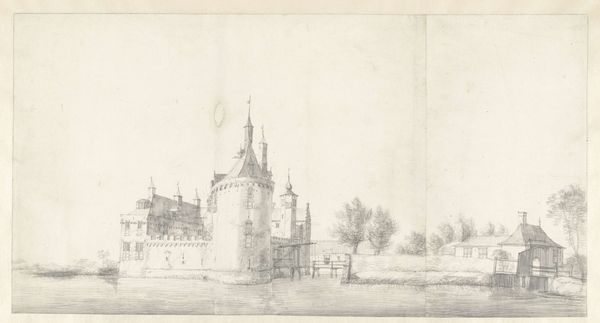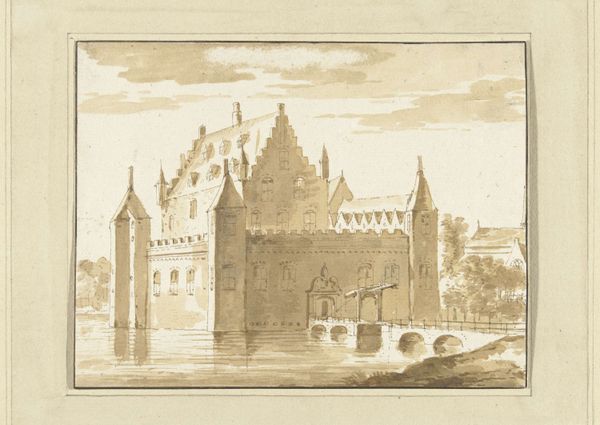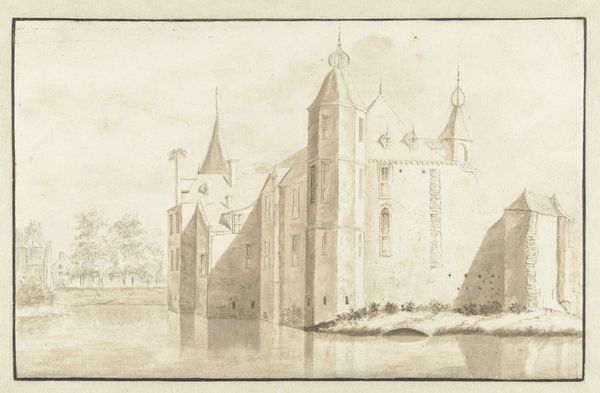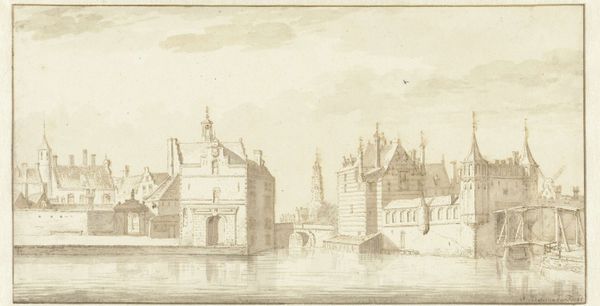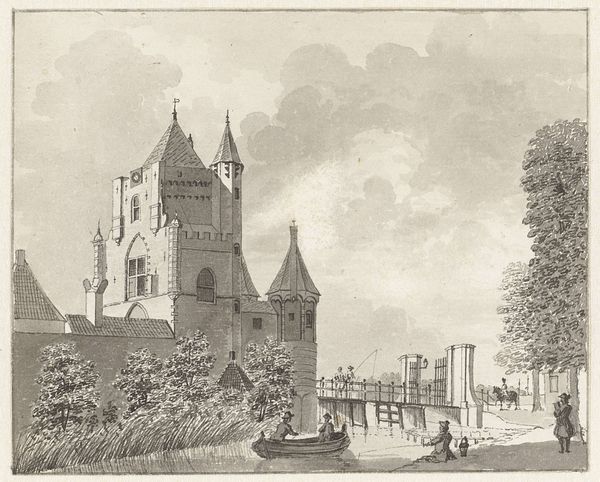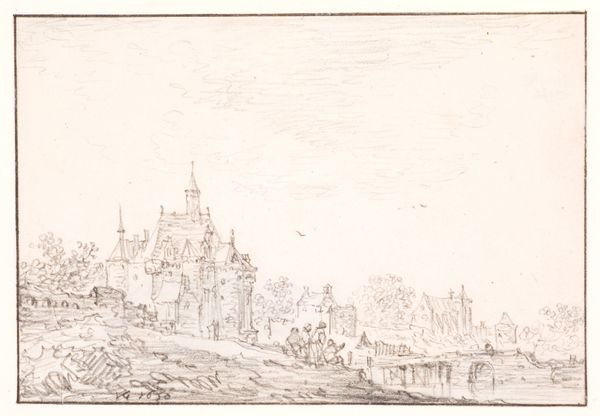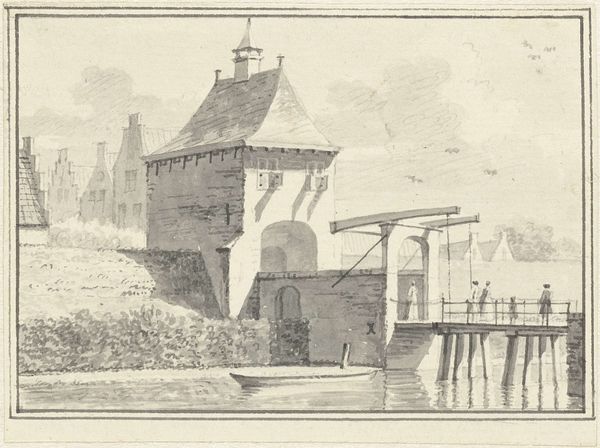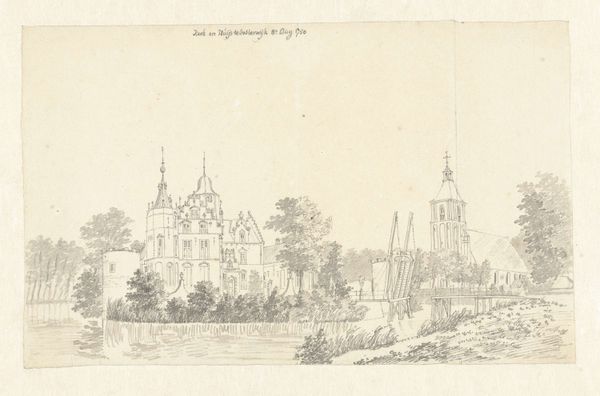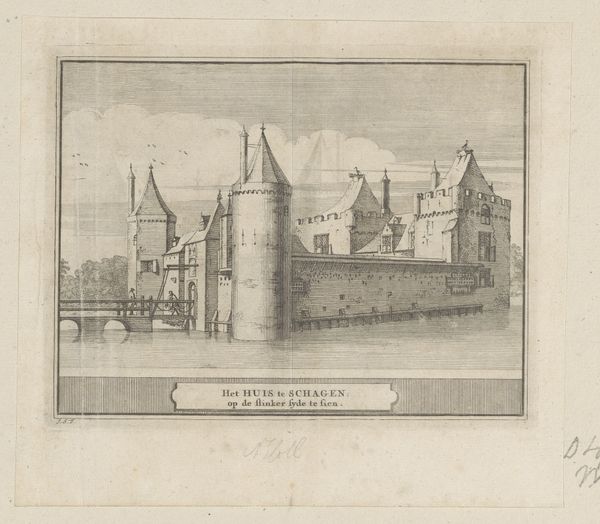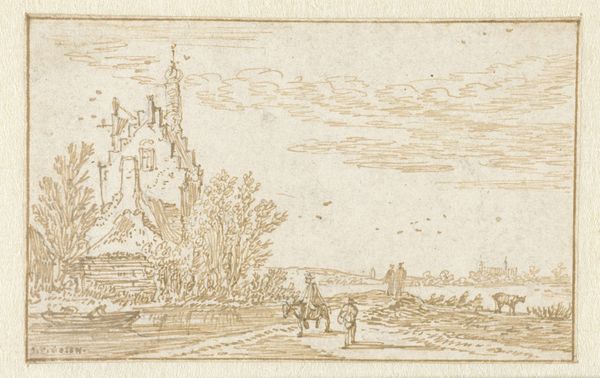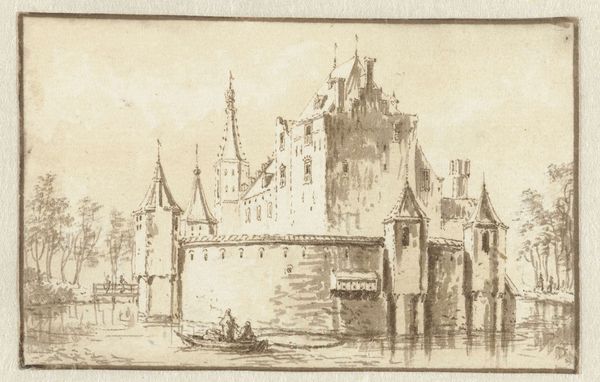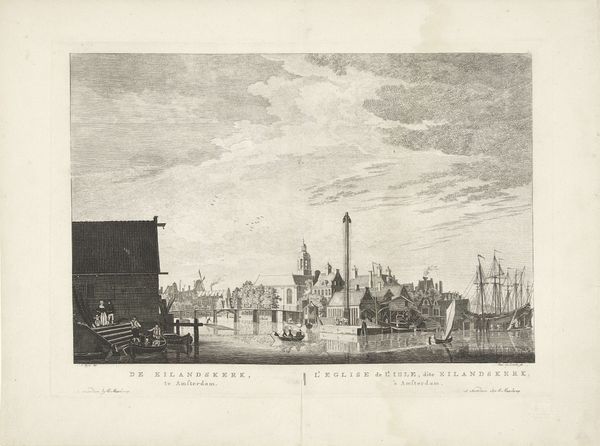
drawing, pen
#
drawing
#
dutch-golden-age
#
landscape
#
pen
Dimensions: height 192 mm, width 300 mm
Copyright: Rijks Museum: Open Domain
Editor: This pen drawing, "Gezicht op het Huis te Schagen" by Jacob van der Ulft, seems to depict a grand estate surrounded by water. I’m struck by the precise linework. What historical context should we consider when looking at this landscape? Curator: Given its creation during the Dutch Golden Age, and its precise depiction of a specific house, it’s worth considering this piece within the context of Dutch topographical art and its role in shaping a sense of national identity. Such detailed renderings of prominent estates weren't just picturesque; they visually reinforced a sense of place and ownership within a burgeoning nation. Editor: So, it’s more than just a pretty picture? Were these kinds of drawings commonly commissioned? Curator: Precisely. These images often served as a form of visual inventory or even as symbolic representations of power and status. The owners would often commission artwork such as these in order to assert not only dominance within the community but display national pride. The artist becomes, in a way, a recorder and interpreter of a certain social order. How does that interpretation resonate with you? Editor: It makes me think about how art can function as a historical document, revealing societal values beyond the aesthetic appeal. It gives new meaning to this drawing. I appreciate the perspective you provided! Curator: Indeed. By analyzing such works through the lens of cultural and social history, we can decipher the hidden meanings embedded within seemingly straightforward depictions.
Comments
No comments
Be the first to comment and join the conversation on the ultimate creative platform.
